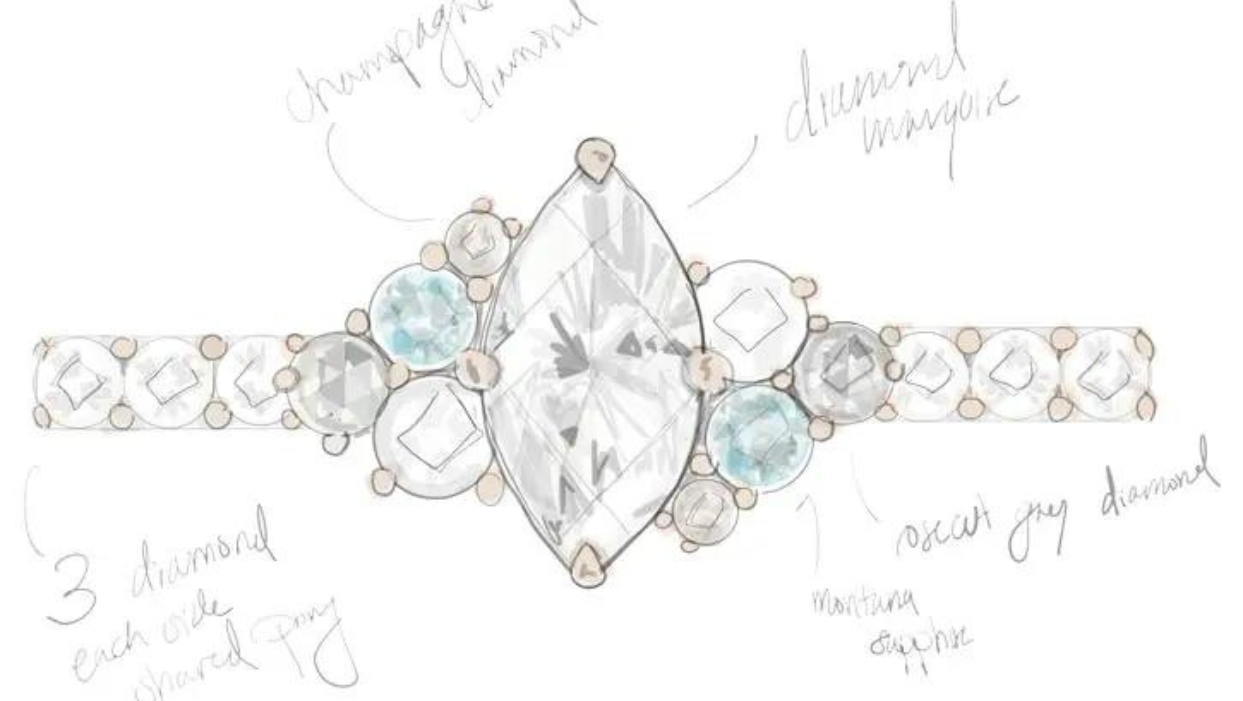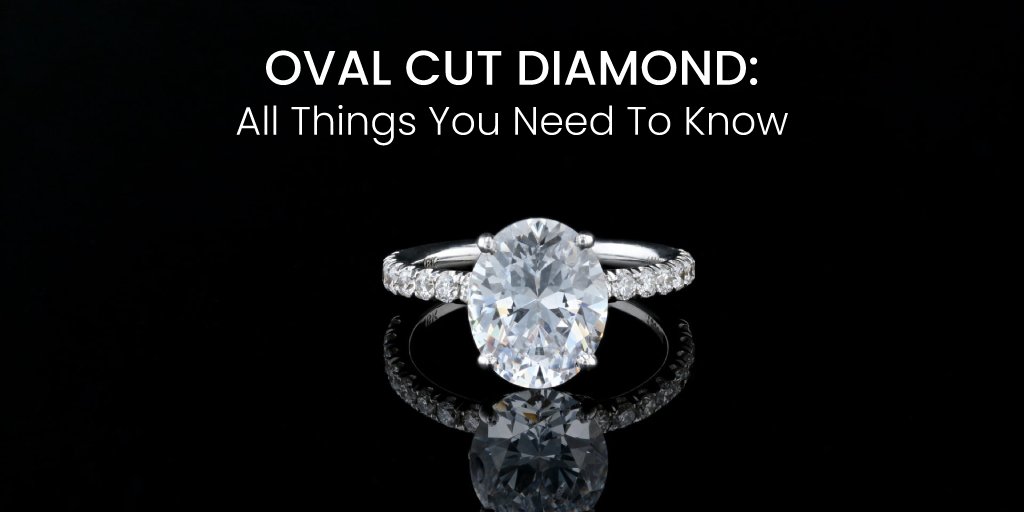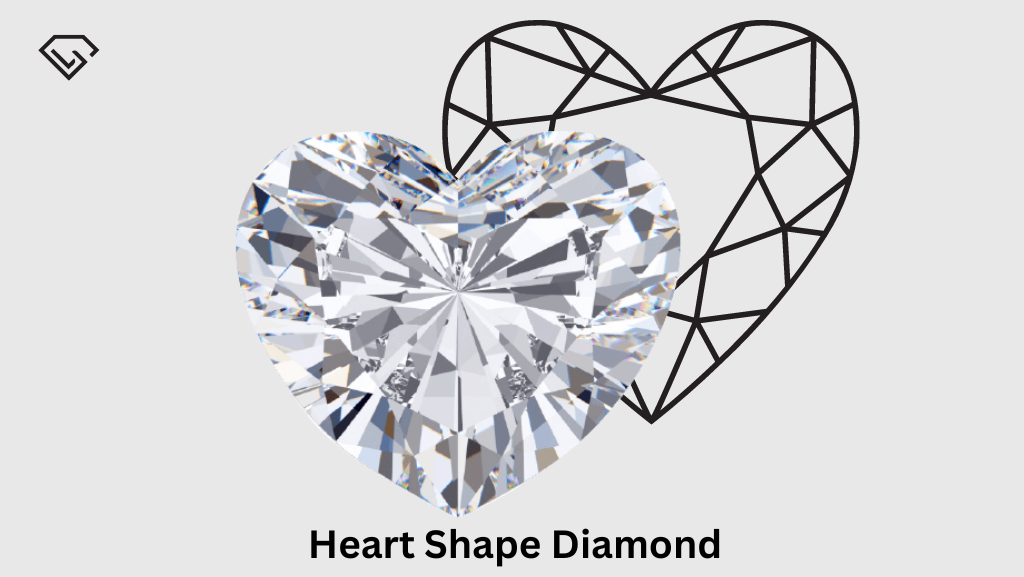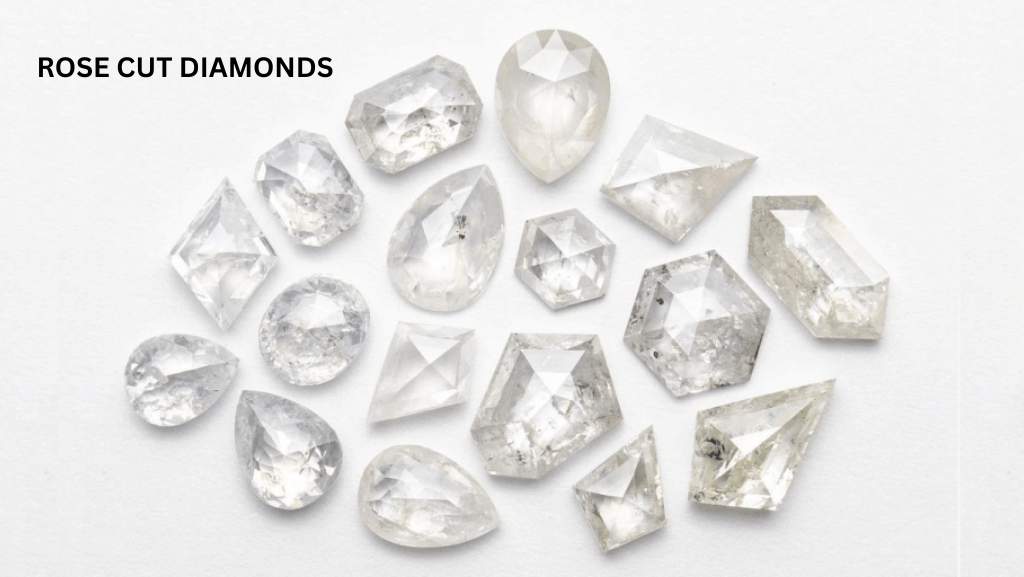Pink Diamonds: The Enchanting Gems That Mesmerize the World
Throughout history, diamonds have captivated the human imagination with their unparalleled beauty and timeless allure. Amongst the vast spectrum of diamond colors, one shade stands out in a league of its own—the breathtaking pink diamond.
Known for its rarity, elegance, and extraordinary value, the pink color diamond has become a symbol of prestige and sophistication. However, the traditional realm of natural pink is now being challenged by an innovative alternative: lab grown pink diamonds.
These lab created gems, meticulously crafted in controlled environments, offer a fascinating alternative to their natural counterparts. As technology advances and the global demand for ethically sourced and sustainable gems grows, the emergence of lab grown pink color diamonds has sparked a profound shift in the jewelry industry.
We at Loose Grown Diamonds will shed light on their origin, characteristics, and the intriguing distinctions between natural and lab grown varieties, their extraordinary rarity in nature, and how cultivating their synthetic counterparts within laboratories is done.
Whether you are a gem lover, a jewelry connoisseur, or simply fascinated by the relationship of science and beauty, this article will provide an in-depth overview of pink diamonds and the intriguing debate between natural and lab grown variants.
What are Lab Created Pink Diamonds?
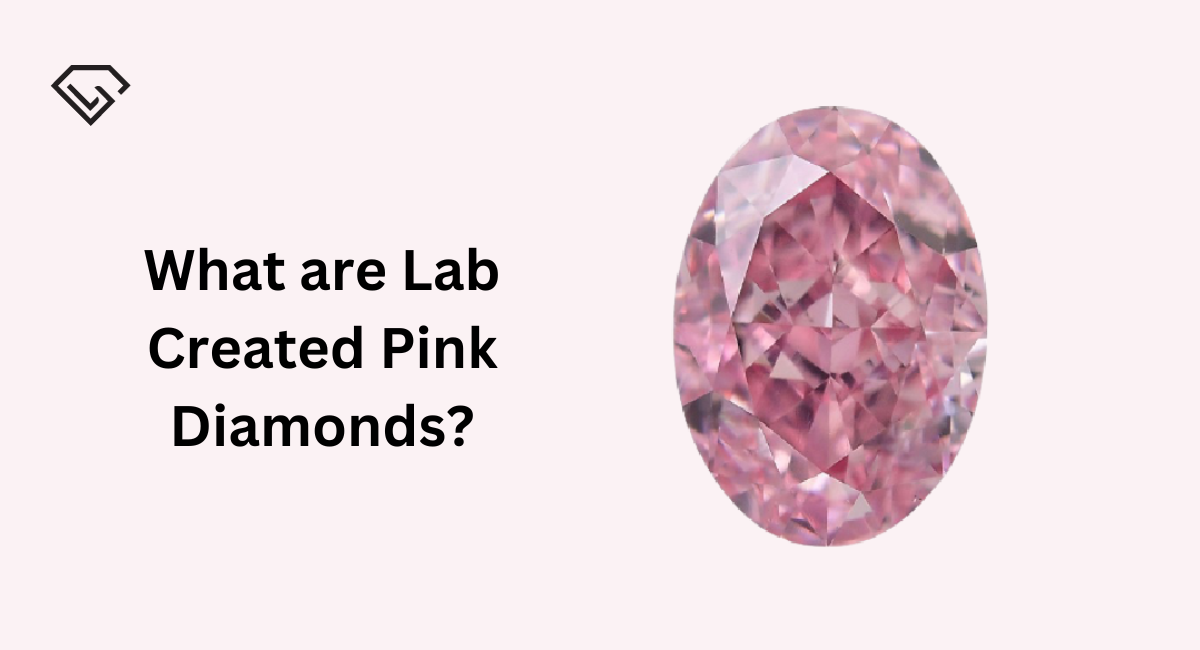
Lab created pink diamonds, also known as synthetic or man-made pink diamonds, are created in a laboratory using advanced technological processes that mimic the natural conditions required for diamond formation. Unlike natural pink diamonds, which take millions of years to develop deep within the Earth, lab grown diamonds pink color are grown under controlled environments in a fraction of the time.
The process involves using a seed diamond and subjecting it to high pressure and high temperature or chemical vapor deposition techniques, allowing carbon atoms to accumulate and crystalize around the seed.
Lab technicians can manipulate the diamond’s color, clarity, and size by controlling the growth parameters. Pink lab diamonds are genuine diamonds with the same chemical composition and physical properties as natural ones.
They offer advantages such as affordability, ethical production methods, and reduced environmental impact. While natural pink color diamonds remain highly valued, pink lab diamonds are gaining popularity as a captivating alternative that combines beauty, ethics, and affordability.
Pink Diamond 4Cs
The 4Cs—Color, Clarity, Cut, and Carat Weight serve as universal criteria to assess the quality and value of diamonds, including pink color diamonds.
Color: One of the most distinguishing features of a pink diamond is its color. Pink color diamonds are available in a variety of colors, ranging from light pastels to bright, brilliant pinks. Pink diamond color is graded by the Gemological Institute of America (GIA) on a scale of “Faint” to “Fancy Vivid.” The brighter and more vivid the pink hue, the more expensive and rare the diamond.
Clarity: The existence of internal or exterior defects, known as inclusions and blemishes, is referred to as clarity. Diamonds pink, like other diamonds, can have variable degrees of clarity. The GIA grades diamond clarity on a scale ranging from “Flawless” (no visible inclusions or blemishes under 10x magnification) to “Included” (visible inclusions to the naked eye). Pink diamonds with higher clarity grades are generally more valuable.
Cut: The cut of a diamond refers to its proportions, symmetry, and overall craftsmanship. The cut has a significant impact on a diamond’s brilliance, sparkle, and overall beauty. While the 4Cs were initially developed for colorless diamonds, the same principles apply to diamonds. Well-cut pink diamonds are skillfully faceted to maximize their color intensity and brilliance.
Carat Weight: Carat weight measures the size of a diamond and is one of the most apparent factors influencing a diamond’s value. Pink diamonds, like all diamonds, are weighed in carats. Larger pink diamonds are typically rarer and more valuable, assuming all other factors, such as color and clarity, are equal.
Pink Diamond Color Grading
Pink diamond color grading involves assessing the color intensity and saturation of pink diamonds, which are graded on a scale developed by the Gemological Institute of America (GIA). The GIA color grading scale for pink diamonds ranges from “Faint” to “Fancy Vivid,” with several intermediate grades in between. Here is a breakdown of the GIA pink diamond color grading scale:
Faint |
Pink diamonds in this grade display a very light, pale pink color. The pink hue may be subtle and barely noticeable. |
Very Light |
Pink diamonds in this grade exhibit a slightly stronger pink color compared to faint diamonds but are still considered very light in intensity. |
Light |
Pink color diamonds in this grade have a noticeably stronger pink color than the previous categories but are still relatively light in intensity. |
Fancy Light |
Pink color diamonds in this grade exhibit a light to moderate pink color intensity. The pink hue becomes more prominent and noticeable. |
Fancy |
Pink lab diamonds in this grade display a medium to strong pink color saturation. The pink color is more vivid and distinct. |
Fancy Intense |
Pink diamonds in this grade exhibit a significantly stronger and more intense pink color. The pink hue is bold and captivating. |
Fancy Vivid |
Pink lab diamonds in this grade represent the highest color saturation and intensity on the GIA scale. They exhibit a vibrant and vivid pink color that is exceptionally rare, highly sought after. |
The GIA color grading scale for pink diamonds primarily focuses on the intensity and saturation of the pink color, without considering secondary hues. Higher color grades like Fancy Intense and Fancy Vivid are rarer and more valuable due to their vibrant and intense pink color. However, personal preference plays a significant role in selecting a diamond pink, as individuals may have different preferences for the specific shade and intensity of pink they find most appealing.
How Much Does a Pink Diamond Cost?
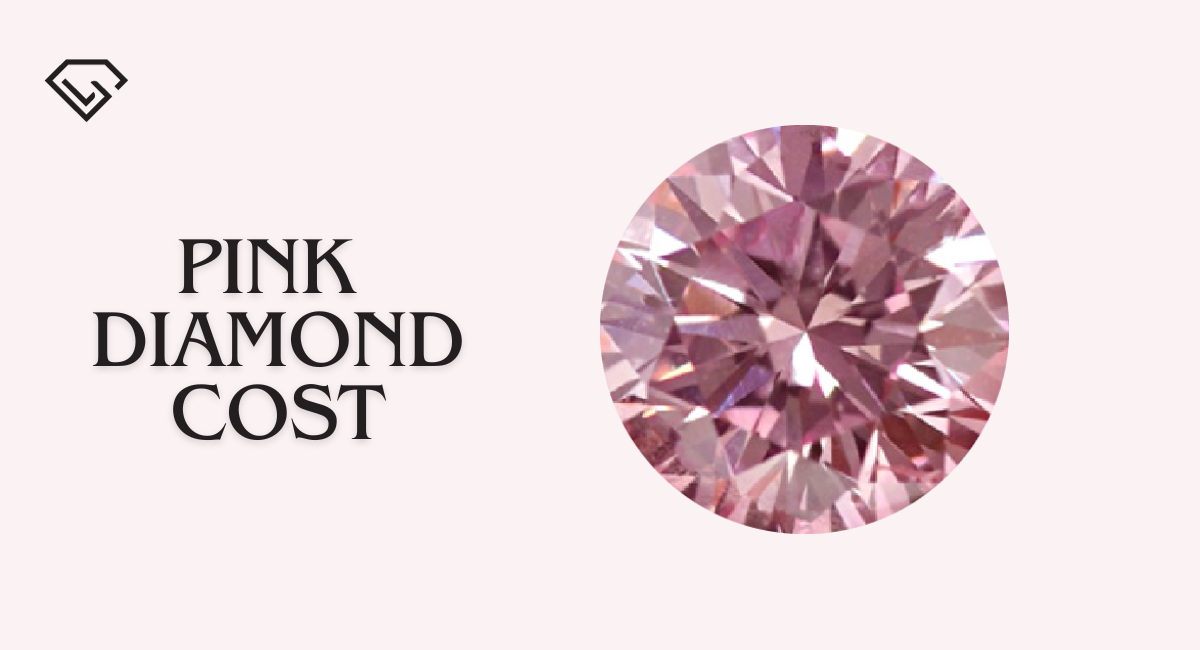
Pink diamond prices can vary based on factors like color intensity, carat weight, clarity, cut quality, and rarity. Pink color diamonds are highly sought after and can reach extraordinary prices which are often also dependent on the pink color diamond uses. Here’s a general price range based on color intensity grades:
Faint to Light Pink: These diamonds are generally more affordable, ranging from several thousand dollars per carat to tens of thousands of dollars per carat, depending on quality.
Fancy Light to Fancy: Pink lab diamond prices in this range can be significantly higher due to increased color saturation. Prices range from tens of thousands to hundreds of thousands of dollars per carat.
Fancy Intense to Fancy Vivid: These are the most valuable diamonds pink color, with vivid and intense color. Prices start from hundreds of thousands of dollars per carat, reaching into the millions for larger, high-quality stones.
These price ranges are approximate and can be influenced by market conditions, diamond characteristics, pink color diamond use and buyer demand. Natural pink diamonds are subject to significant price fluctuations and increases over time.
Lab grown diamonds are generally more affordable, offering a lower-priced option for those seeking the beauty of fancy pink color diamonds. Pink diamond prices typically begin at $500 and can escalate to thousands of dollars. It’s recommended to consult reputable jewelers or diamond experts for accurate pricing information based on specific diamond characteristics.
Which Jewelry Can Pink Color Diamonds Be Used In?
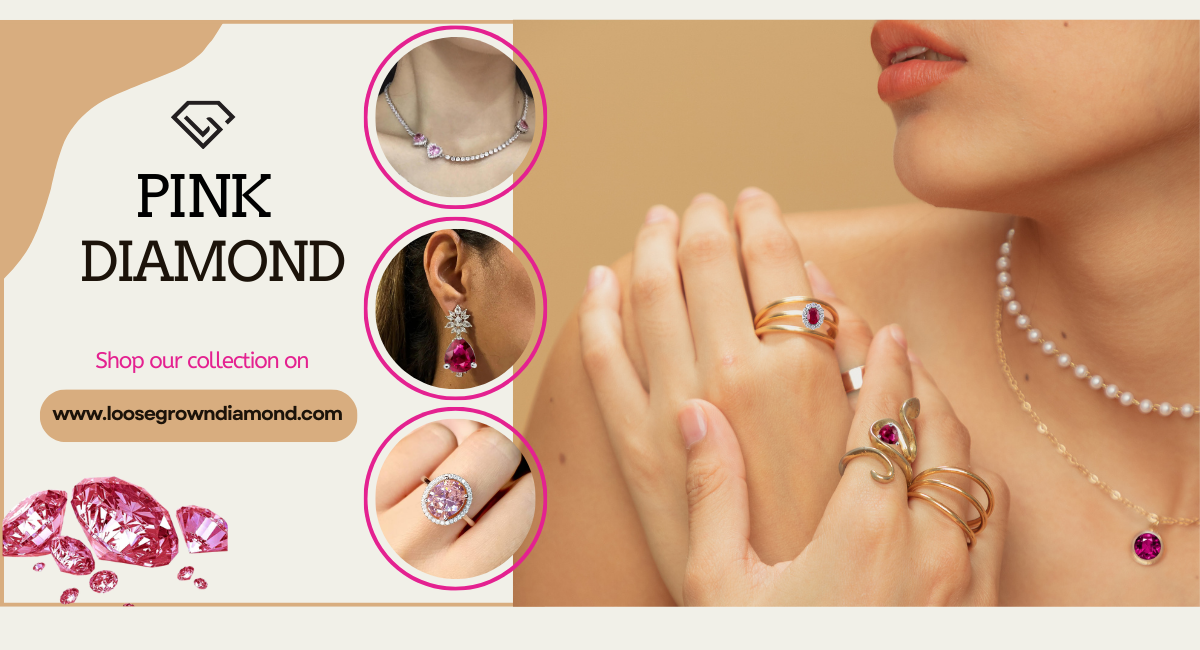
Pink diamonds are highly desirable for their unique color and are incorporated into various jewelry pieces, including rings, earrings, necklaces, bracelets, pendants, brooches and more. Women’s pink diamond rings, particularly for engagements and cocktails, create striking and romantic pieces. Pink diamond earrings add elegance and femininity, often paired with white diamonds or other gemstones.
Pink diamond necklaces make a statement, whether with a single pendant or cascading diamonds. Diamond color pink bracelets offer captivating adornment, while pink color diamond pendants showcase their beauty. Pink lab diamond brooches add elegance to attire. Pink color diamonds are often combined with white diamonds or colored gemstones for a stunning contrast.
The choice of jewelry depends on personal style and occasion, but regardless, pink diamonds add enchantment and exclusivity to any piece.
Where to Buy Pink Lab Grown Diamonds?
You can purchase pink lab grown diamonds from reputable sources such as online retailers. LGD platforms offer a wide range of pink lab diamonds in various shapes and settings. You can enjoy a special discount when buying the diamond by using a promo code. Additionally, brick-and-mortar jewelry stores may carry lab grown diamonds, including pink color diamonds, alongside natural diamonds.
This is the most feasible option a buyer can opt for which makes the process and purchase more accessible. However, one could also consider visiting reputable jewelers in your area or contacting diamond suppliers and manufacturers specializing in lab grown diamonds for a wider selection and customization options.
Auctions and estate sales occasionally feature lab grown pink diamonds, although availability may be limited compared to natural diamonds. When one wishes to buy pink diamonds, one must ensure that they deal with reputable sellers who provide reliable certification from respected gemological laboratories such as IGI or GIA.
Conclusion
Pink color diamonds hold a unique allure and charm, captivating jewelry enthusiasts. The emergence of lab grown diamonds offers an exciting alternative to natural ones. Lab created pink color diamonds possess the same properties and brilliance as natural diamonds, with a range of stunning hues and affordable prices.
They also provide ethical and environmental benefits, aligning with sustainability. While natural pink diamonds remain exclusive, lab grown diamonds have gained acceptance and popularity for their beauty and conscious appeal.
Whether choosing natural or lab grown pink diamonds, both options offer remarkable and enchanting gemstones. The decision depends on personal preference, budget, and values, celebrating the splendor of nature or human innovation and leaving a lasting treasure of beauty and elegance.
FAQ
How are lab grown pink diamonds made?
Pink lab diamonds are created using one of two primary methods: chemical vapor deposition (CVD) or high-pressure, high-temperature (HPHT) synthesis. In the CVD method, a diamond seed is exposed to a carbon-rich gas, and as the carbon atoms deposit onto the seed, it grows into a diamond. HPHT synthesis involves subjecting a diamond seed to high pressure and temperature, which encourages the growth of a larger diamond.
Can pink color diamonds be certified?
Yes, pink lab grown diamonds can be certified by reputable gemological laboratories, just like natural diamonds. Certifications provide information about the diamond’s quality, including its color, clarity, cut, and carat weight. The most well-known diamond certification organizations are the Gemological Institute of America (GIA) and the International Gemological Institute (IGI).
How much is a pink diamond worth?
The price of a pink lab diamond varies greatly based on criteria such as color intensity, size, clarity, and general rarity. They usually start from $500 and go up to thousands of dollars. Diamond pink are among the most costly and rare gemstones, and their values can be extremely high.
How much would a pink diamond ring cost?
Pink diamond prices and ring prices vary substantially based on various aspects, including size, color intensity, clarity, cut quality, and the kind and quality of metal used in the setting. A pink diamond engagement ring can cost as little as a few thousand dollars for lesser, lower-quality stones and as much as several hundred thousand dollars or more for larger, higher-quality pink color diamonds that have superior color saturation.
How rare are pink diamonds?
Pink lab diamonds are among the rarest and most valuable colored diamonds account for only a small percentage of all diamonds mined, with some estimates claiming that pink diamonds account for less than 0.1% of all diamonds discovered.
Pink color diamonds are much rare because they are mostly derived from a few select mines, such as Australia’s Argyle mine, which has discontinued operations. Pink color diamonds market worth and appeal are increased by their scarcity in nature, combined with their compelling beauty.
Should I buy a lab grown diamond for an engagement ring?
The decision to purchase a lab grown diamond for a pink diamond engagement ring is a personal one that is influenced by your priorities and values. When compared to natural diamonds, lab grown diamonds have various advantages, including ethical considerations, sustainability, and typically a lower price. Ultimately, it is important to consider your budget, environmental concerns, and personal preferences when deciding on a lab grown diamond for a pink engagement ring.

